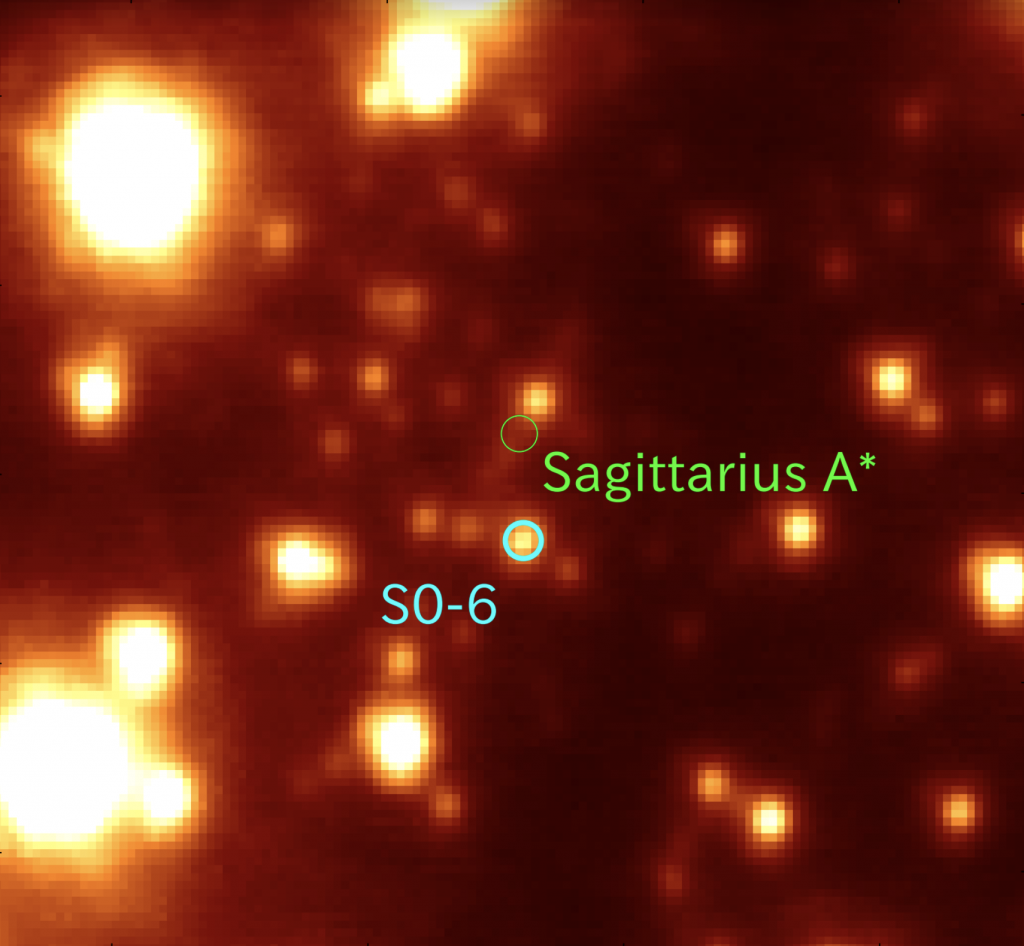Subaru Telescope essential in discovery of extragalactic star : Maui Now

[ad_1]
For the first time, with the help of the Subaru Telescope on Hawaiʻi Island, a star of extragalactic origin thought to have originated in a small galaxy near the Milky Way has been found in the vicinity of the supermassive black hole at the center of our galaxy.
The Subaru Telescope is an 8.2 meter optical-infrared telescope near the summit of Maunakea. It is operated by the National Astronomical Observatory of Japan, National Institutes of Natural Sciences.

“The Milky Way is not only made up of stars that were born there,” said Shogo Nishiyama, associate professor at Miyagi University of Education in Japan. “Stars of various origins come together to form one beautiful galaxy. There may be stars born outside the Milky Way galaxy near our solar system, and there may be planets there as well.”
Research by an international team led by Nishiyama indicates that some of the stars may have come from farther away than previously thought. The team used the Subaru Telescope over the course of eight years to observe the star S0-6 located only 0.3 arcseconds away from Sagittarius A*(Sgr A*,) the supermassive black hole at the center of our galaxy, according to a news release.
Subaru Telescope’s adaptive optics system is described as “an essential instrument” in the completion of this study.
“The center of the Milky Way galaxy is jam-packed with numerous stars. Even with telescopes ranging from 8 to 10 meters, we still could not distinguish our desired target, S0-6, from neighboring stars,” said Nishiyama. “The adaptive optics system has granted us superior spatial resolution, enabling us to capture S0-6’s spectra.”
The team determined that S0-6 is more than 10 billion years old and has a chemical composition similar to stars found in small galaxies outside the Milky Way, such as the Small Magellanic Cloud and the Sagittarius dwarf galaxy.

“This star, S0-6, likely originated from a small galaxy orbiting the Milky Way,” said Nishiyama. “The gravity near a giant black hole is incredibly powerful, so that stars cannot be formed. However, many stars are found near Sgr A*. This is an interesting mystery.”
The most likely theory to explain the composition of S0-6 is that it was born in a now-extinct small galaxy orbiting the Milky Way that was absorbed, according to researchers. This is the first observational evidence suggesting that some of the stars in the vicinity of Sagittarius A* formed outside of the galaxy, according to the release.
Over its 10 billion year life, S0-6 must have travelled more than 50,000 light-years from outside of the Milky Way to reach the vicinity of Sagittarius A*. S0-6 may have traveled much more than 50,000 light-years, slowly spiraling down to the center rather than making a straight shot, according to the announcement.
There are still many questions, according to Nishiyama: “Did S0-6 really originate outside the Milky Way galaxy? Does it have any companions, or did it travel alone?” he asks. “The search for extraterrestrial life may lead us not only to life outside our solar system, but also to life born outside the Milky Way galaxy. Our research has shown that stars originating outside the Milky Way galaxy can be anywhere in the galaxy. With further investigation, we hope to unravel the mysteries of stars near the supermassive black hole.”
These results appeared as Nishiyama et al. “Origin of an Orbiting Star around the Galactic Supermassive Black Hole” in the online edition of “Proceedings of the Japan Academy, Ser. B, Physical and Biological Sciences” on Dec. 1, 2023.
This research was conducted by a team of researchers from Miyagi University of Education, Daido University, Wakayama National College of Technology, Aichi University of Education, Tohoku University, Waseda University, National Astronomical Observatory of Japan, Observatoire de la Côte d’Azur, and Instituto de Astrofísica de Andalucía.
Figure 1: The central region of the Milky Way galaxy as captured by the Subaru Telescope. The image shows many stars in a field of view about 3 arcseconds across. The star S0-6 (blue circle), the subject of this study, is located about 0.3 arcseconds from the supermassive black hole Sagittarius A* (green circle.) (Credit: Miyagi University of Education/ NAOJ)
Figure 2: Figure comparing the elemental composition of stars in several regions and galaxies, showing that S0-6 (red circle) is more similar to stars in the Small Magellanic Cloud (triangle) and Sagittarius dwarf galaxy (light blue circle) than to stars in the disk (green circle) and bulge (yellow circle) of the Milky Way galaxy. The horizontal axis of the figure is the logarithm of the ratio of the number of iron and hydrogen atoms, and the vertical axis is the logarithm of the ratio of the number of alpha elements to iron elements. Alpha elements are those elements such as carbon, oxygen, magnesium, silicon, and calcium that are formed by the bonding of helium nuclei. The vertical and horizontal dashed lines ([iron/hydrogen]=0, [alpha elements/iron]=0) show the values for the Sun. A value of +1.0 is for 10 times the Sun, and a value of -1.0 for one-tenth the Sun. (Credit: NAOJ/Miyagi University of Education)
[ad_2]
Source: Maui News




